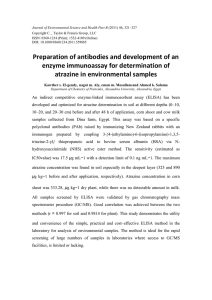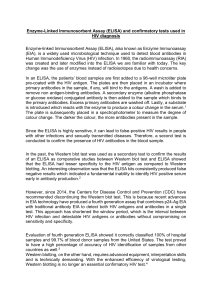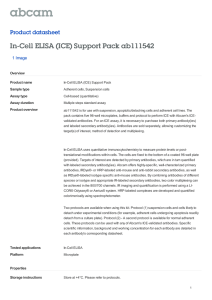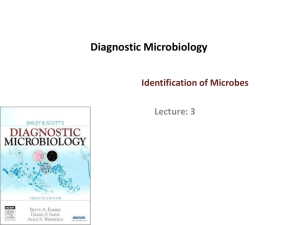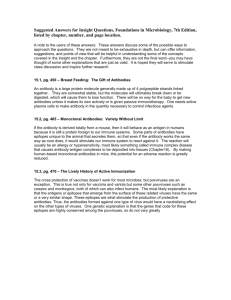How Immuno Assays (ELISAs) work Web Quest
advertisement
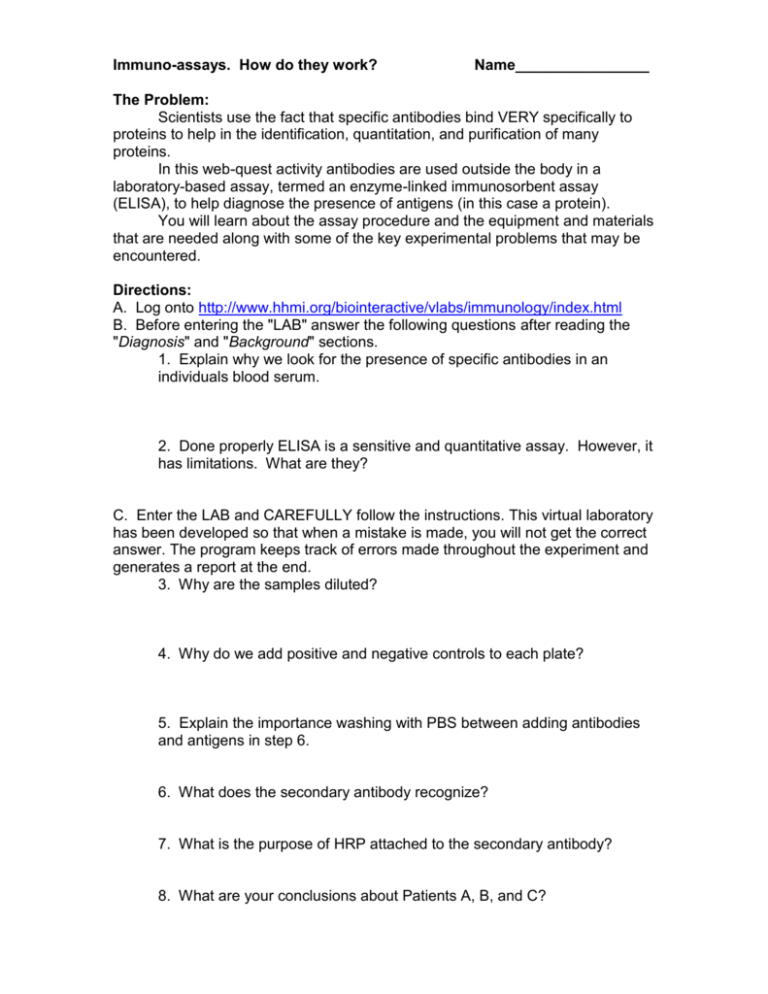
Immuno-assays. How do they work? Name________________ The Problem: Scientists use the fact that specific antibodies bind VERY specifically to proteins to help in the identification, quantitation, and purification of many proteins. In this web-quest activity antibodies are used outside the body in a laboratory-based assay, termed an enzyme-linked immunosorbent assay (ELISA), to help diagnose the presence of antigens (in this case a protein). You will learn about the assay procedure and the equipment and materials that are needed along with some of the key experimental problems that may be encountered. Directions: A. Log onto http://www.hhmi.org/biointeractive/vlabs/immunology/index.html B. Before entering the "LAB" answer the following questions after reading the "Diagnosis" and "Background" sections. 1. Explain why we look for the presence of specific antibodies in an individuals blood serum. 2. Done properly ELISA is a sensitive and quantitative assay. However, it has limitations. What are they? C. Enter the LAB and CAREFULLY follow the instructions. This virtual laboratory has been developed so that when a mistake is made, you will not get the correct answer. The program keeps track of errors made throughout the experiment and generates a report at the end. 3. Why are the samples diluted? 4. Why do we add positive and negative controls to each plate? 5. Explain the importance washing with PBS between adding antibodies and antigens in step 6. 6. What does the secondary antibody recognize? 7. What is the purpose of HRP attached to the secondary antibody? 8. What are your conclusions about Patients A, B, and C?



